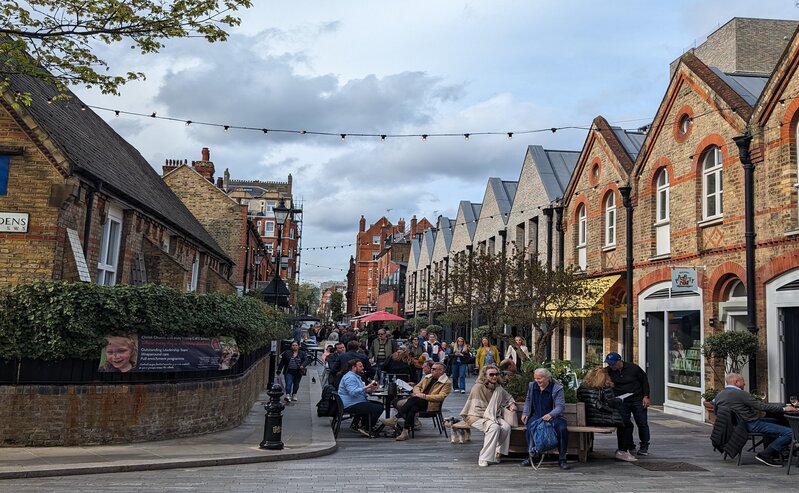
23 Apr Discovering London’s longest mews.
Tucked away, only a few minutes walk from the busy Sloane Square lies Pavilion Road, home to London’s longest mews which has been reimagined as a modern high street.
The London Society hosted a tour of the street with Cadogan and architects Stiff & Trevillion who worked together with the Royal Borough of Kensington & Chelsea for many years to create this new space.
Originally comprising nine terrace houses, most of which were no longer fit for purpose (three were kept), the street functioned as a rat-run (shortcut) which, pre-pandemic, was a two-way street plagued by parked cars and congestion. Now, it has blossomed into a thriving hub of independent retailers, eateries, and services.
Pavilion Road’s transformation from a service road to a lively hospitality-focused destination is a testament to the parties involved and the community, who, through long-running extensive engagement, were clear in their desire for a village high street offer.
The offer is indeed that of a (high-end as befits its location) village high street, with a butcher, baker, wine merchant, cheesemonger, and services such as hair and beauty, dry cleaning, and a bookshop. Careful curation and interviews with prospective tenants ensured a diverse mix of independent, small chain, London traders and boutiques, fostering a sense of authenticity.
The nature of the offer and the format of large, traditional doors on many of the shops allowed the street to stay open and trade through the Covid period further building a sense of community. The street has also adapted organically, opening with planning consent for only one restaurant which has now grown to more than five.
Heritage and conservation played a big part in the retention of gated doors on former garages and protecting views of St. Paul’s Cathedral (from Richmond which are in the sight lines) while striving for sustainability benefits in the transformation of the street.
Another game-changer was the creation of a modern service yard. By moving access to behind the businesses with a shared entrance and deep basement levels, it made it easier to remove traffic from the street and for people to imagine how this would work.
The development is a good example of how much more control the large estates have in curating their neighbourhoods. Many of the challenges of the high street are tied to a lack of knowledge on property owners or they aren’t actively engaged in the location. It was clear to see here (and in other parts of London under single ownership) how a long-term view, flexible leases, engagement, and a coordinated approach to place management and marketing can create a successful place.
Find out more on the Pavillion Road website or go and visit!
This is one of many tours which The London Society offers each to get behind the scenes in key buildings or locations across the capital. Diane is a trustee of the society.

